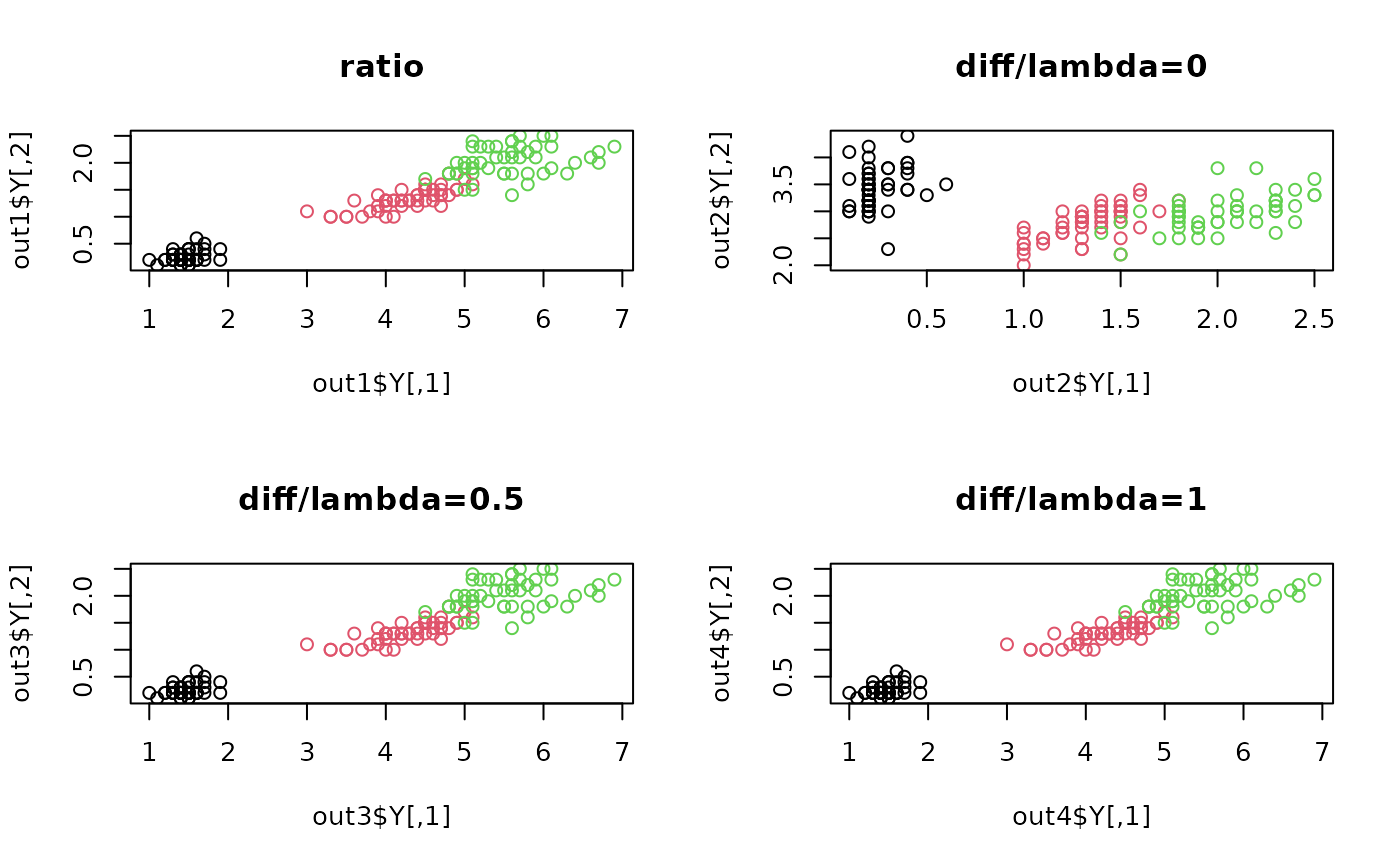Constraint Score (Zhang et al. 2008) is a filter-type algorithm for feature selection using pairwise constraints. It first marks all pairwise constraints as same- and different-cluster and construct a feature score for both constraints. It takes ratio or difference of feature score vectors and selects the indices with smallest values.
do.cscore(X, label, ndim = 2, ...)Arguments
- X
an \((n\times p)\) matrix whose rows are observations and columns represent independent variables.
- label
a length-\(n\) vector of class labels.
- ndim
an integer-valued target dimension (default: 2).
- ...
extra parameters including
- preprocess
an additional option for preprocessing the data. See also
aux.preprocessfor more details (default:"null").- score
type of score measures from two score vectors of same- and different-class pairwise constraints;
"ratio"(default) and"difference"method. See the paper from the reference for more details.- lambda
a penalty value for different-class pairwise constraints. Only valid for
"difference"scoring method. (default: 0.5).
Value
a named Rdimtools S3 object containing
- Y
an \((n\times ndim)\) matrix whose rows are embedded observations.
- cscore
a length-\(p\) vector of constraint scores. Indices with smallest values are selected.
- featidx
a length-\(ndim\) vector of indices with highest scores.
- projection
a \((p\times ndim)\) whose columns are basis for projection.
- trfinfo
a list containing information for out-of-sample prediction.
- algorithm
name of the algorithm.
References
Zhang D, Chen S, Zhou Z (2008). “Constraint Score: A New Filter Method for Feature Selection with Pairwise Constraints.” Pattern Recognition, 41(5), 1440--1451.
See also
Examples
# \donttest{
## use iris data
## it is known that feature 3 and 4 are more important.
data(iris)
iris.dat = as.matrix(iris[,1:4])
iris.lab = as.factor(iris[,5])
## try different strategy
out1 = do.cscore(iris.dat, iris.lab, score="ratio")
out2 = do.cscore(iris.dat, iris.lab, score="difference", lambda=0)
out3 = do.cscore(iris.dat, iris.lab, score="difference", lambda=0.5)
out4 = do.cscore(iris.dat, iris.lab, score="difference", lambda=1)
## visualize
opar <- par(no.readonly=TRUE)
par(mfrow=c(2,2))
plot(out1$Y, col=iris.lab, main="ratio")
plot(out2$Y, col=iris.lab, main="diff/lambda=0")
plot(out3$Y, col=iris.lab, main="diff/lambda=0.5")
plot(out4$Y, col=iris.lab, main="diff/lambda=1")
 par(opar)
# }
par(opar)
# }